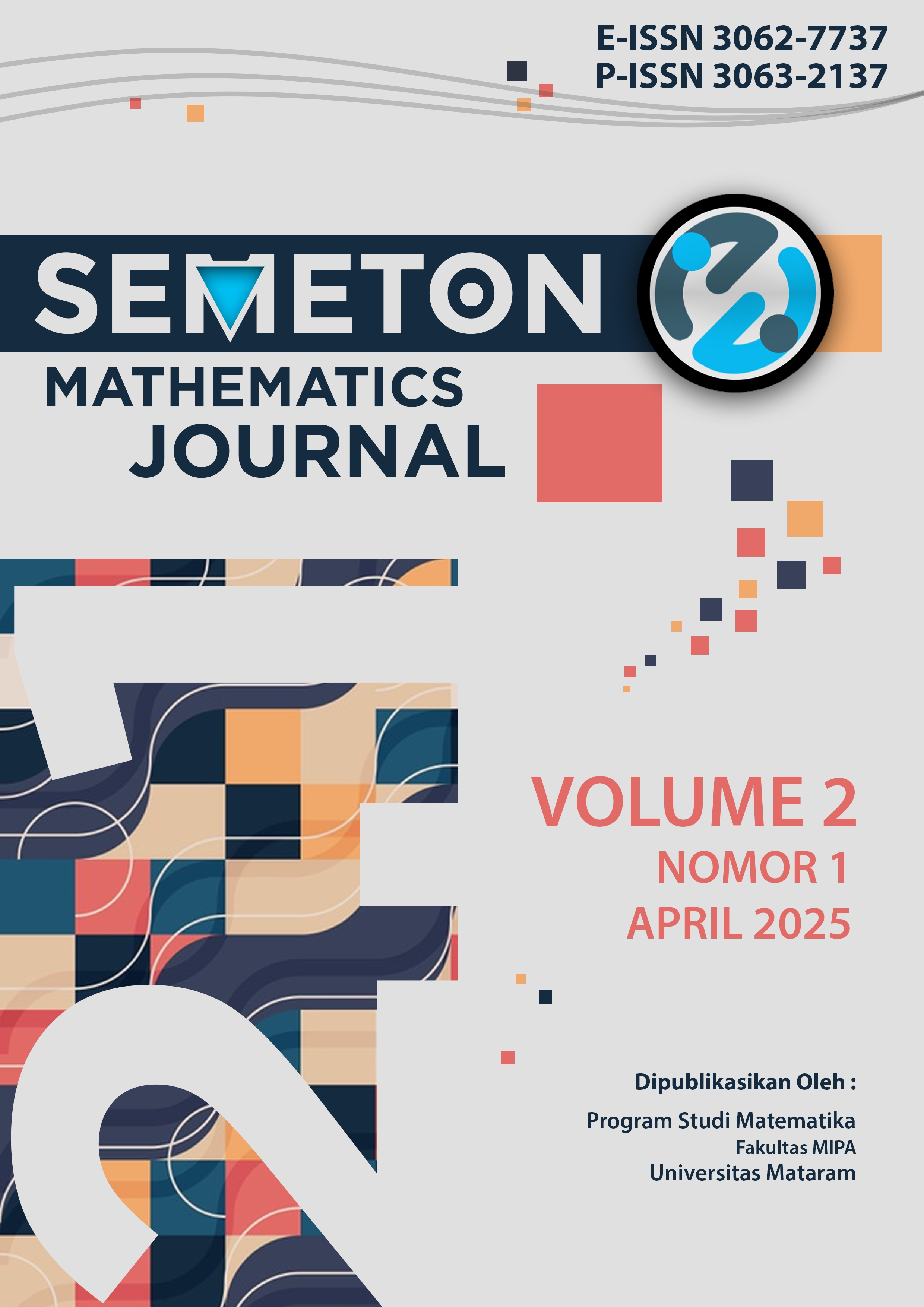Pengaruh metode pembelajaran project based learning terhadap motivasi belajar mahasiswa prodi matematika FMIPA Universitas Mataram
DOI:
https://doi.org/10.29303/semeton.v2i1.267Keywords:
Project-Based Learning, Learning Motivation, Multiple Linear RegressionAbstract
This study evaluates the impact of the Project-Based Learning (PBL) method on the learning motivation of Mathematics students at FMIPA Universitas Mataram. The primary objective is to assess the effectiveness of PBL in enhancing learning motivation and to explore the influencing factors, namely Facilities (X₁), Lecturer Role (X₂), and Skill Development (X₃). This research employs a quantitative descriptive method, with a population of 257 Mathematics students from FMIPA Universitas Mataram, covering the 2020–2023 cohorts. The sample is determined using the Stratified Random Sampling method. Data were collected through research instruments that had been tested for validity and reliability. Data analysis was conducted using descriptive analysis (pie charts, bar charts, histograms, and scatter plots) and multiple linear regression to identify the influence of the independent variables (X₁, X₂, X₃) on (Y). The findings indicate that 63.8% of the variation in learning motivation (Y) can be explained by Facilities (X₁), Lecturer Role (X₂), and Skill Development (X₃). Both simultaneous and partial tests confirm that all independent variables contribute significantly to students’ learning motivation. These results suggest that the PBL method is not only effective in enhancing learning motivation but also holds potential as an innovative teaching strategy in higher education.References
P. D. Anggraini and S. S. Wulandari, “Analisis penggunaan model pembelajaran project based learning dalam peningkatan keaktifan siswa,” Jurnal Pendidikan Administrasi Perkantoran (JPAP). vol. 9, no. 2, pp. 292-299, 2021, doi: https://doi.org/10.26740/jpap.v9n2.p292-299.
B. Darma, “Statistika Penelitian Menggunakan SPSS (Uji Validitas, Uji Reliablitas, Regresi Linier Sederhana, Regresi Linier Berganda, Uji t, Uji F, R2),” Jakarta: Guepedia, 2021.
D. Firmansyah, and Dede, “Teknik Pengambilan Sampel Umum dalam Metodologi Penelitian: Literature Review,” Jurnal Ilmiah Pendidikan Holistik (JIPH)., vol. 1, no. 2, pp. 85-114, 2022, doi: https://doi.org/10.55927/jiph.v1i2.937.
Freire, and Paulo, “Pendidikan Kaum Tertindas,” Yogyakarta: Narasi, 2020.
I. Machali, “Metode Penelitian Kuantitatif: Panduan Praktis Merencanakan, Melaksanakan dan Analisis dalam Penelitian Kuantitatif,” Yogyakarta: Fakultas Ilmu Tarbiyah dan Keguruan Universitas Islam Negeri (UIN) Sunan Kalijaga Yogyakarta, 2021.
A. M. Sanusi, A. Septian and S. Inayah, “Kemampuan Berpikir Kreatif Matematis dengan Menggunakan Education Game Berbantuan Android pada Barisan dan Deret,” Mosharafa: Jurnal Pendidikan Matematika., vol. 9, no. 3, pp. 511–520, 2020, doi: https://doi.org/10.31980/mosharafa.v9i3.633.
A. Septian, Darhim and S. Prabawanto, “Mathematical representation ability through geogebra-assisted project-based learning models,” Journal of Physics: Conference Series, 2020, doi: 10.1088/1742-6596/1657/1/01/2019.
J. H. Siahaan, S. Sihombing and B. A. Simamora, “Studi Komparasi Kemampuan Berpikir Kritis Siswa Dengan Menggunakan Model Pembelajaran Berbasis Masalah Dan Model Pembelajaran Konvensional Pada Mata Pelajaran Ips Terpadu Kelas VIII Di SMP Negeri 10 Pematangsiantar TA 2022/2023,” Cendikia: Media Jurnal Ilmiah Pendidikan., vol. 13, no. 2, pp. 188-195, 2022, doi: https://doi.org/10.35335/cendikia.v13i2.3012 .
N. Suriani and M. S. Jailani, “Konsep Populasi dan Sampling Serta Pemilihan Partisipan Ditinjau Dari Penelitian Ilmiah Pendidikan,” IHSAN: Jurnal Pendidikan Islam., vol. 1, no. 2, pp. 24-36, 2023, doi: https://doi.org/10.61104/ihsan.v1i2.55.
J. Yanto and A. T. Tenriajeng, “Pengaruh Budaya Kesehatan Dan Keselamatan Kerja Terhadap Kinerja Pekerja Pada Proyek Pembangunan Pabrik Keramik Quadra Tangerang,” Teras Jurnal: Jurnal Teknik Sipil., vol. 10, no. 2, pp. 244-254, 2020, doi: http://dx.doi.org/10.29103/tj.v10i2.334.
Downloads
Published
How to Cite
Issue
Section
License

This work is licensed under a Creative Commons Attribution-ShareAlike 4.0 International License.



